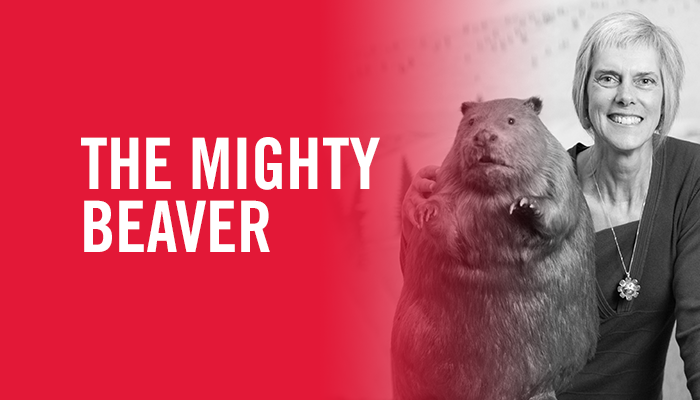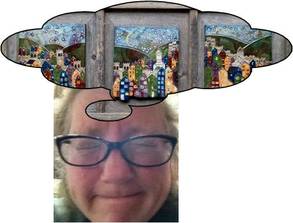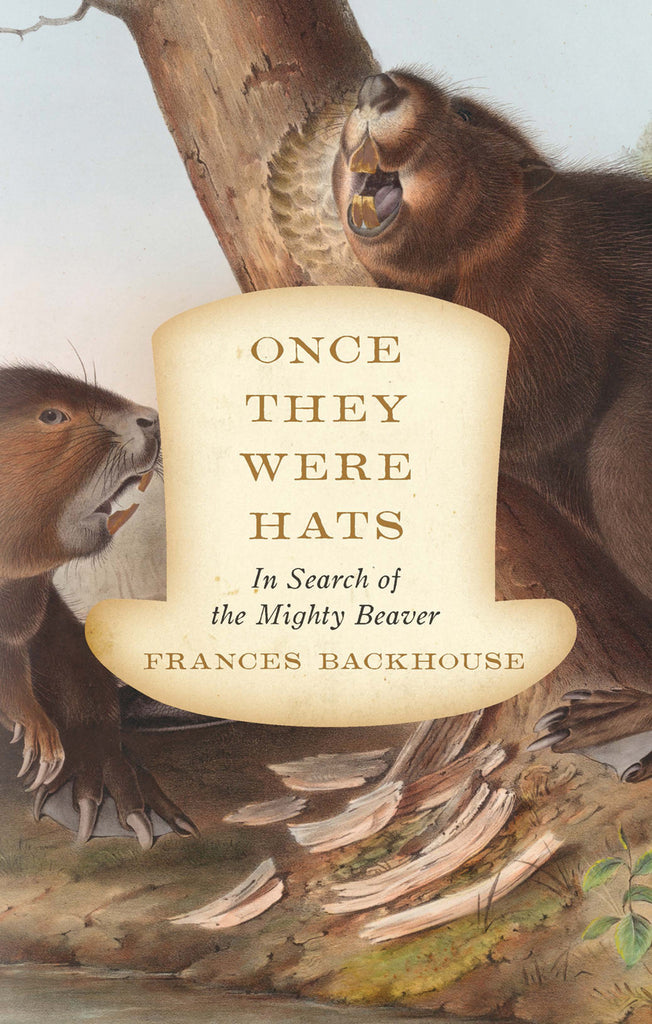There’s great news from three nations today just in time for our Suday funnies. First there’s the fantastic announcement that Frances Backhouse (author of Once they were Hats) will be doing a lecture in 2 weeks for idea city (which is the canadian equivalent of TED talks). If you live near Toronto and have a spare 300 you might consider being in the audience. Us poor California folks will have to wait for the vide0,

Award-winning Canadian author Frances Backhouse is a former biologist whose curiosity about the world enticed her into a writing career. Her 2015 book Once They Were Hats: In Search of the Mighty Beaver, was heralded by The Globe and Mail as one of the “20 books you’ll be reading – and talking about – for the rest of the year.”
Speaking the morning of Friday, June 16th – buy your tickets now!
Frances was kind enough to donate another copy of her beloved book for our silent auction, and we are eager to see how the dynamic ideacity event success. Hopefully it will remind folks, like Glynnis talk back in the day, that beavers really matter.
Lots of good work in this country too, where beaver friend and Geology Student Erin Poor just posted about the project she’s working on in tualatin. Remind me again, how many people were talking about the Pros and Cons of Urban beaver before Martinez and Worth A Dam? Oh that’s right. Zero!
Beavers are known as environmental engineers because of their ability to change the landscape to fit their needs. Beaver activity, such as dam building, can increase stream and floodplain complexity, which may create a more diverse habitat for wildlife in the area.
Many scientists are curious to discover how beavers affect impaired urban streams. The USGS recently began studying the effect of beaver populations on urban streams in Tualatin River basin, located in the Portland, OR, metropolitan area. Scientists are studying whether beaver activity can improve the health of city streams. Insights from this study will provide a good foundation of the “pros and cons” of beavers in urban areas, thereby allowing local agencies to make management decisions based on science. This research is a collaboration between the USGS Oregon Water Science Center and Clean Water Services of Washington County, Oregon.
Tualatin_beaver_study_WithinOurReachPoster_2016Bring back beavers to fight flooding and pollution, expert claims
Further proof that one person can make a difference? Here’s a slapdash beaver article from one of the silly English rags that will steal any story and photo off the internet and call it ‘news’. Case in point? How about my photo that I mocked up before Brexit? This was on USA news today along with an assortment of dimly related beaver images from around the globe, including the shop lifting beaver at Christmas in Maryland. Never mind, at least folks are talking about it.

 We have some wonderful new auction items to mention this fine sunday morning, and I’m thinking we should start with Jennifer Lovett’s smart book for teens and tweens “Beavers away“. It’s a great way to look at the issue and she does an excellent job talking about the importance of beaver to biodiversity. I especially like this graphic. I met Jennifer on the beaver management forum on Facebook set up by Mike Callahan in Massachusetts. (It’s a good place to hear about beaver work and if you aren’t a member you should be.) She is a big supporter of all things beaver and became a good beaver buddy.
We have some wonderful new auction items to mention this fine sunday morning, and I’m thinking we should start with Jennifer Lovett’s smart book for teens and tweens “Beavers away“. It’s a great way to look at the issue and she does an excellent job talking about the importance of beaver to biodiversity. I especially like this graphic. I met Jennifer on the beaver management forum on Facebook set up by Mike Callahan in Massachusetts. (It’s a good place to hear about beaver work and if you aren’t a member you should be.) She is a big supporter of all things beaver and became a good beaver buddy.
Thanks Jennifer!
Beavers-AwayFinally we have a much anticipated donation from Marcella Henkles in Corvalis Oregon. You will remember she was the amazing raku tile artist who featured two lovely beaver tiles to the Beaver tales art exhibit both of which sold almost immediately. I’m  sure she was surprised to hear from me begging at her door but she generously agreed to send me one of the works she had recently fired. The complex technique demands carving the image on wet clay then glazing it into color. You really have to see it in person to understand how the colors, textures and rough barn wood all work together. It’s gorgeous. Doesn’t this need to be on your wall immediately?
sure she was surprised to hear from me begging at her door but she generously agreed to send me one of the works she had recently fired. The complex technique demands carving the image on wet clay then glazing it into color. You really have to see it in person to understand how the colors, textures and rough barn wood all work together. It’s gorgeous. Doesn’t this need to be on your wall immediately?

And just because beavers like to look their Sunday best, here’s a fun video from Robin of Napa showing some excellent back footed grooming.


 Looks like
Looks like  Hot dam! Beavers — extremely weird, and essential to who we are
Hot dam! Beavers — extremely weird, and essential to who we are






































